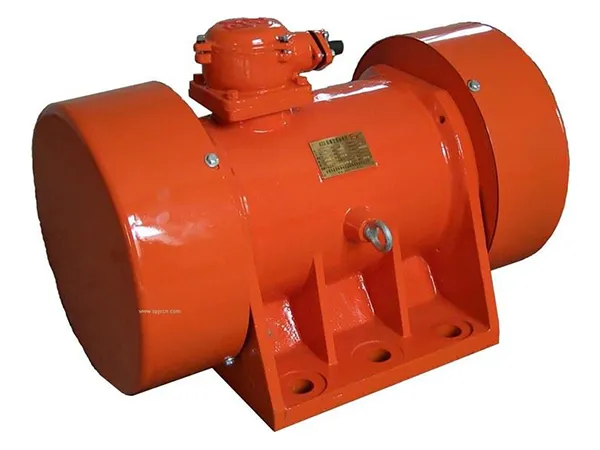time:Jun 28, 2024 source:ZEXCIT
A vibrating feeder is an equipment designed to feed material consistently and uniformly to a process or machine. It uses vibration to move material along a trough or chute to the desired location. Vibrating feeders are widely used in various industries due to their efficiency and reliability.
The price of vibrating feeders can vary widely based on factors such as size, capabilities, complexity, and specific industry requirements. Here's a general overview of the price ranges.

Electromagnetic Vibrating Feeders
Small and medium-sized units typically range from $100 to $500 per piece. Larger units can range from $2,400 to $6,500 per piece depending on capacity and additional features.
Large Vibrating Feeders
For heavy-duty applications, such as those used in mining or large-scale industrial processes, prices can range from $8,000 to $56,000 per piece. These prices depend on the specific model, maximum feeding capacity, and additional features .
Specialized Vibrating Feeders
Some feeders designed for very specific purposes, like certain types of mining or material handling, can range from $25,000 to $85,000 per piece .

Design and Specifications
Capacity: Feeders designed for higher capacity will generally cost more.
Dimensions: Larger feeders require more materials and construction effort.
Design Complexity: Custom designs or feeders with advanced features (e.g., variable speed control, multiple feeding points) can increase costs.
Materials and Construction
Material Quality: The type and grade of materials used (e.g., stainless steel, carbon steel) impact the price.
Durability: Feeders designed for abrasive or corrosive environments may require specialized coatings or materials, increasing the cost.
Type of Vibrating Mechanism
Electromagnetic vs. Electromechanical: Electromagnetic feeders are generally more precise and suitable for fine control, often costing more than electromechanical feeders.
Vibration Frequency and Amplitude: Customization in vibration parameters can affect the price.
Control Systems
Basic Controls: Simple on/off controls are less expensive.
Advanced Controls: Features such as programmable logic controllers (PLCs), remote monitoring, and automation increase costs.
Brand and Manufacturer
Reputation: Well-known brands or manufacturers with a reputation for quality may charge a premium.
Country of Origin: Feeders manufactured in regions with higher labor or production costs may be more expensive.
Application and Industry
Specialized Applications: Feeders designed for specific industries (e.g., food processing, pharmaceuticals, mining) may require additional certifications or features, increasing the cost.
General vs. Custom Applications: Custom feeders tailored to specific needs are usually more expensive than standard models.
Installation and Maintenance
Ease of Installation: Feeder designs that are easier to install may have lower overall costs, even if the initial purchase price is higher.
Maintenance Requirements: Feeders designed for easy maintenance can reduce long-term costs but may have a higher upfront price.

Accessories and Add-ons
Feed Chutes, Hoppers, and Liners: Additional components and accessories can add to the overall cost.
Sensors and Monitoring Devices: Incorporating sensors for monitoring performance or material flow can increase the price.
Customization and Special Requirements
Custom Engineering: Feeder designs that require significant customization to meet specific requirements will be more expensive.
Compliance with Regulations: Meeting specific industry standards or regulations (e.g., FDA, ATEX) can add to the cost.
Market Conditions
Demand and Supply: Fluctuations in market demand and the availability of raw materials can impact prices.
Economic Factors: General economic conditions, including inflation and currency exchange rates, can influence costs.
When choosing a vibrating feeder, it's important to consider factors such as the type of material being handled, the required feed rate, and any specific industry standards. Researching and comparing different models and features will help in selecting the most suitable feeder for your needs and budget.
What are the installation methods of vibration motors and how to adjust the vibration direction?
How to maintain the vibrating screen exciter

A hopper discharging system, also known as a hopper discharge system or hopper unloading system, is a mechanism used to efficiently and reliably empty or discharge materials from a storage hopper or bin. These systems are commonly used in various industries such as mining, agriculture, manufacturing, and bulk material handling.
READ MORE
A vibrating tube-type feeder, also known as a vibratory tube feeder or tube conveyor, is a specialized type of vibrating feeder used for conveying bulk materials in a tube-shaped structure. These feeders are commonly used in industries such as food processing, pharmaceuticals, chemicals, and plastics, where gentle handling of materials and sanitary conditions are essential.
READ MORE
Coal vibrating feeders are used to convey bulk materials from hoppers, silos, crushers, etc. in a wide range of applications including chemical, coal, foundry, quarrying and steel industries. The coal vibrating feeders produced by our company range in capacity from 100 tons/hour to 2500 tons/hour.
READ MORECopyright © 2023 Xinxiang Zongyuan Machinery Equipment Co., Ltd. | All Rights Reserved.